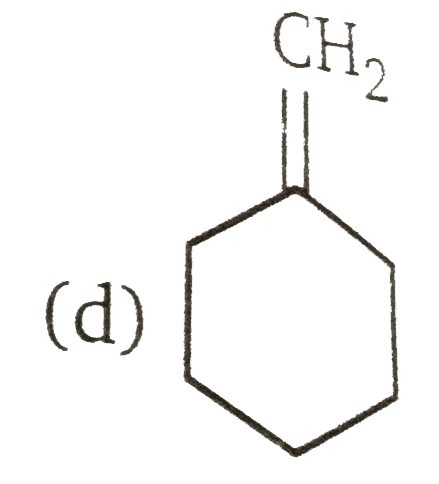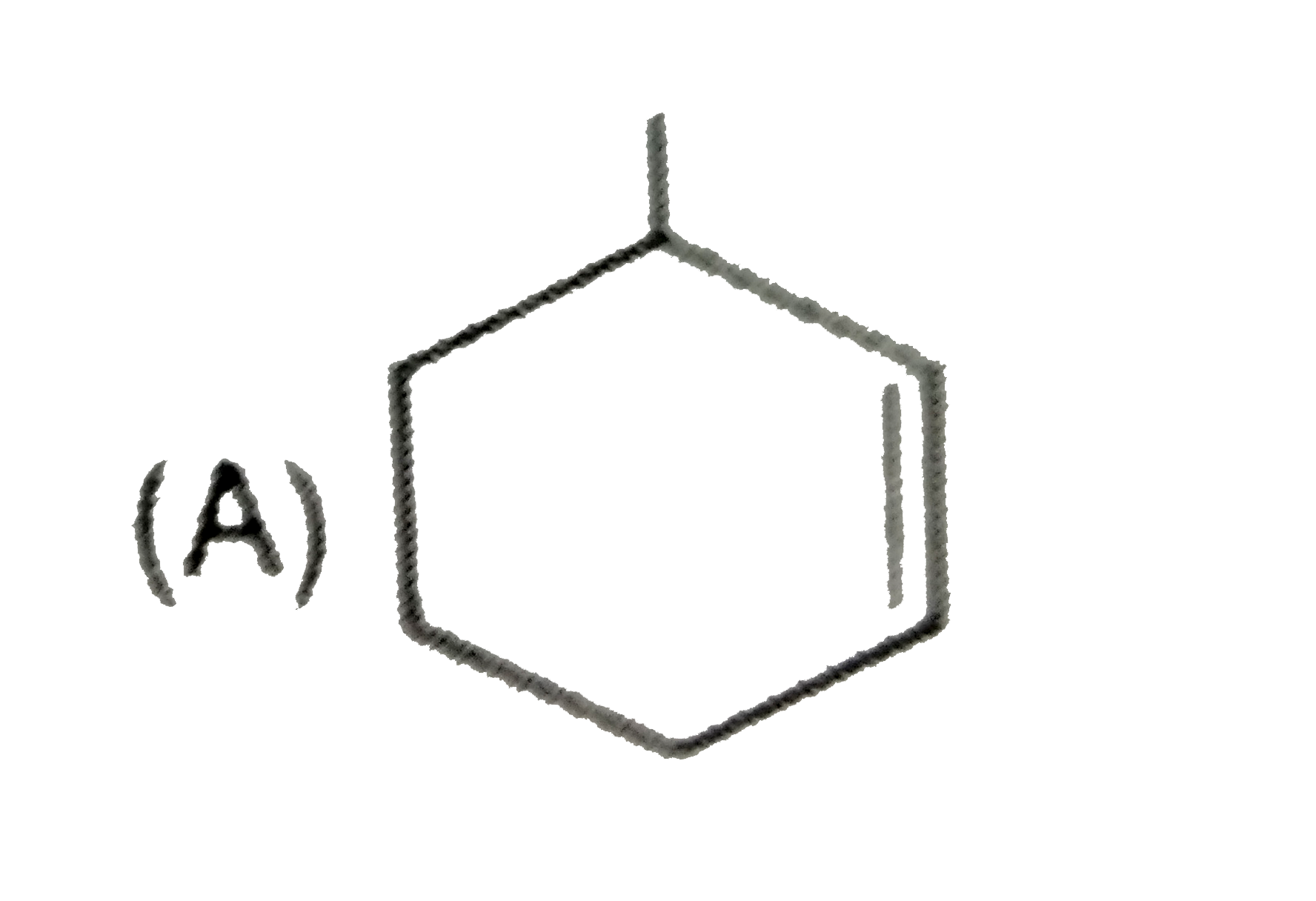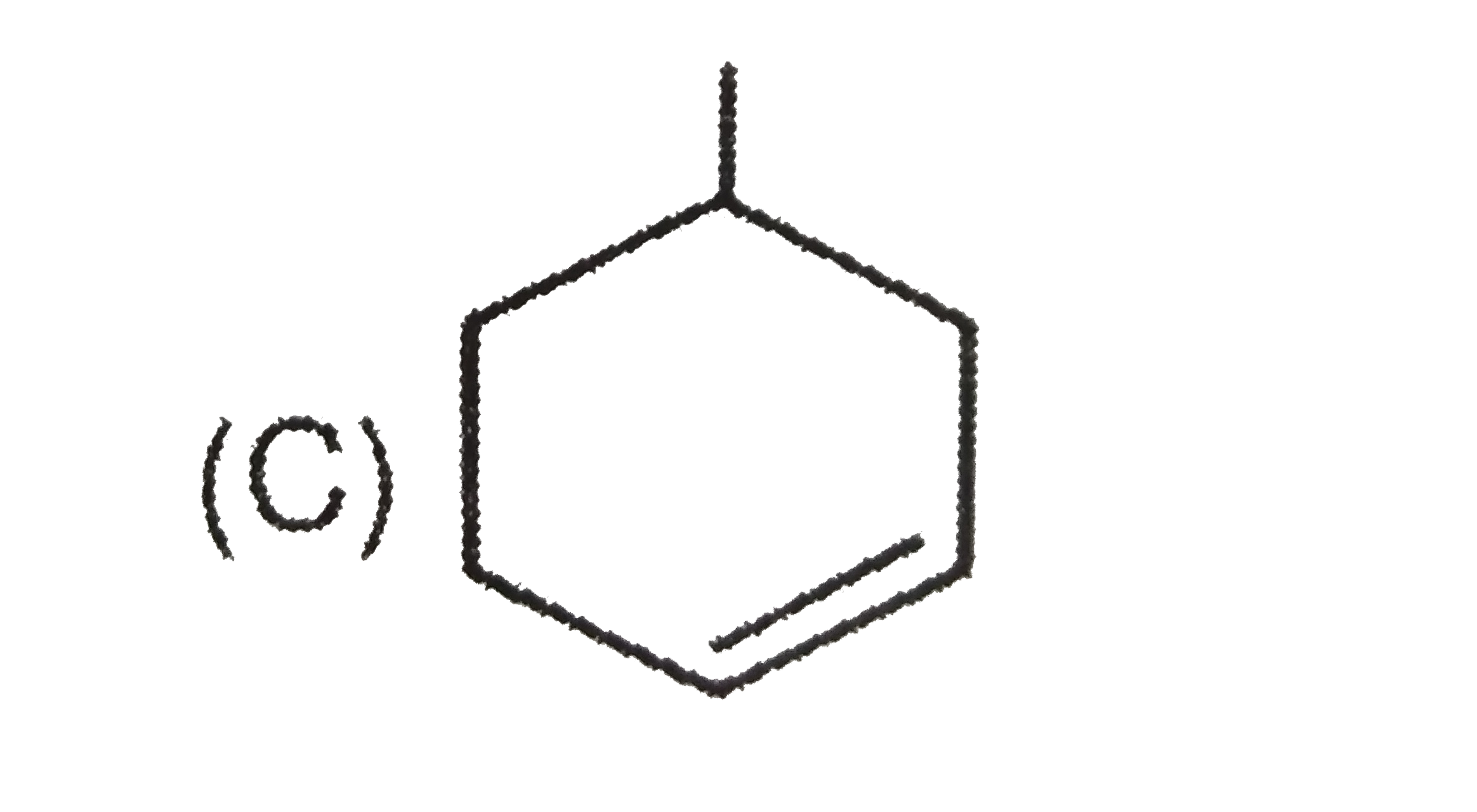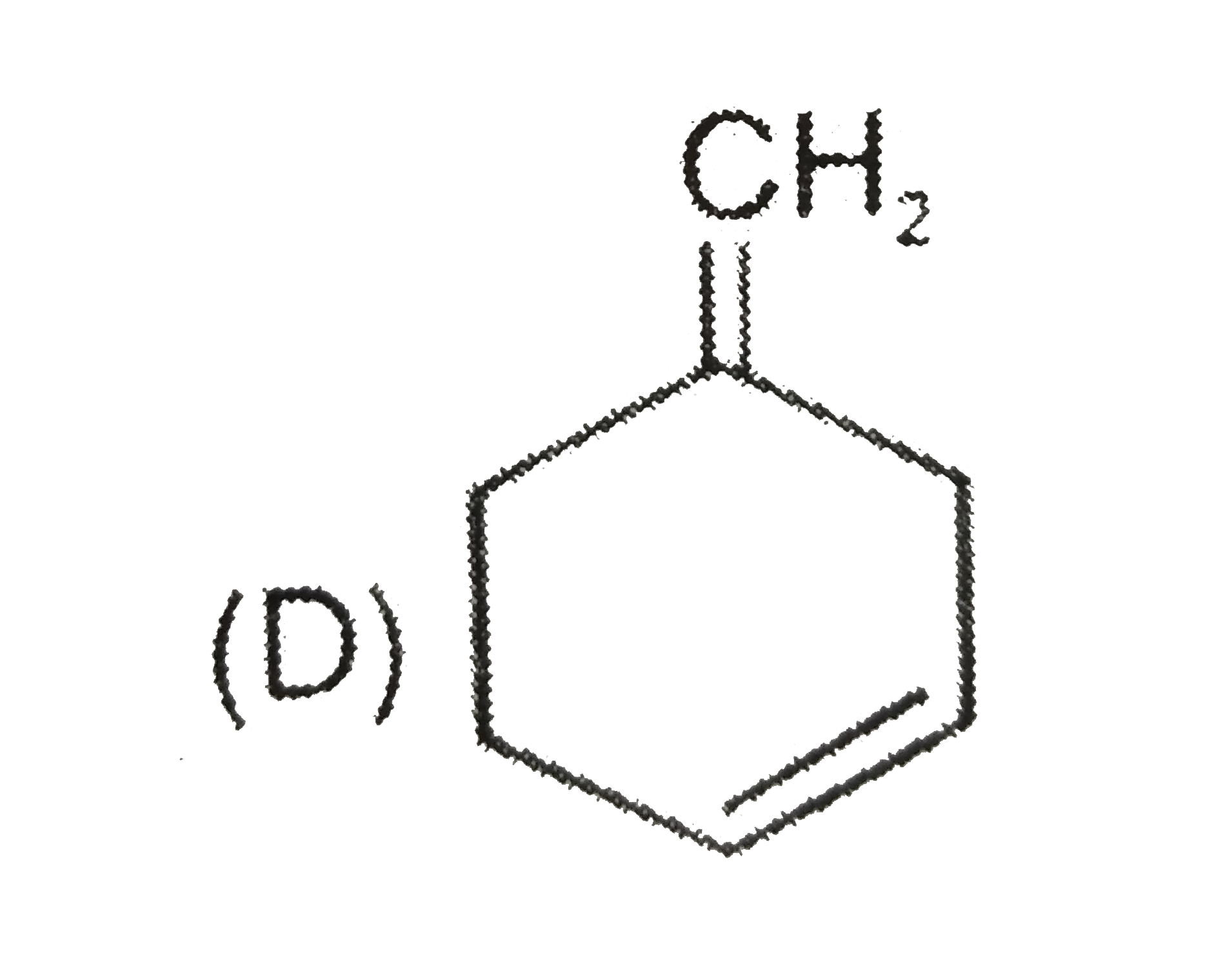Explore topic-wise InterviewSolutions in .
This section includes InterviewSolutions, each offering curated multiple-choice questions to sharpen your knowledge and support exam preparation. Choose a topic below to get started.
| 24401. |
The reaction, (1//2)Hg(g) + AgCl(s)=H^+(aq)+Cl^-(aq)+Ag(s) occurs in the gal vanic cell: |
|
Answer» `AgIAgCI(s)IKCI(SOLN.)AgNO_3(soln.)IAg` |
|
| 24402. |
The reactioin of HBr with CH_(3)C-unde |
|
Answer» `CH_(3)underset(CH_(3))underset(|)(CBr)-CH_(3)`<BR>`CH_(3)CH_(2)CH_(2)CH_(2)-Br` |
|
| 24403. |
The reaction, 1//2 H_(2) (g) + AgCl(s) = H^(+) (aq) + Cl^(-) (aq) + Ag(s) occurs in the galvanic cell . The anode is |
| Answer» Solution :Anode is `H_(2) | H^(+)` , Cathode is `Ag^(+) |Ag`. | |
| 24404. |
The reactio is spontaneous if the cell potential is |
|
Answer» POSITIVE Where s.r.p.=Standard reduction potential IF EMF is positive then the reaction is spontaneous For e.g. in Galvanic CELL (a) EMF=1.1 VOLT (b) Cathode is MADE of copper (c) Anode is made of Zinc EMF=0.34 (-0.76)=1.1 volt |
|
| 24405. |
The reactant which is entirely consumed in reactions is known as limiting reagent. In the reaction 2A+4B rarr 3C+4D, when 5 moles of A react with 6 moles of B, then (i) which is the limiting reagent ? (ii) calculate the amount of C formed ? |
|
Answer» Solution :According to the GIVEN equation, 2 moles of A react with 4 moles of B. `therefore` 5 moles of A will react with 10 moles of B, But we have only 6 moles of B. 6 moles of will react 3 moles of A and 2 moles of A will unreacted. THUS, (i) B is limiting a A is the excess reactant. (II) The AMOUNT of C formed will depend upon the limiting reactant i.e., 6 moles of B 4 moles of B FORM C = 3 moles `therefore"6 moles of B will form C"=(3)/(4)xx6="4.5 moles."` |
|
| 24406. |
the reactant (A) will be |
|
Answer»
|
|
| 24408. |
The RBC deficient Haemoglobin is a sign of…………………. |
|
Answer» VITAMIN `B_(12)` DEFICIENCY |
|
| 24409. |
The raw meterial for nylon-66 is |
|
Answer» adipic acid |
|
| 24410. |
The raw materials required for the manufacture of Buna-N are .. |
|
Answer» acrylonitrile + BUTA - 1,3 - DIENE |
|
| 24411. |
The raw materials used in Nylon-6 is |
| Answer» Answer :D | |
| 24412. |
The raw materials required for the manufacture of Na_2CO_3 by solvay process are |
|
Answer» `CaCl_2,(NH_4)_2CO_3, NH_3` |
|
| 24413. |
The raw materials fed into the blast furnace for making iron are : |
|
Answer» FeO , `CaCO_3` and coke |
|
| 24414. |
The rawmaterialusedin Fischer Tropschprocessfor the manufactureos synthetic petroleum is : |
|
Answer» Watergas |
|
| 24415. |
The raw materials is Solvay process are: |
|
Answer» NAOH, CAO and `NH_3` |
|
| 24416. |
The raw material is used in the manufacture of neoprene? |
|
Answer» isoprene |
|
| 24417. |
The raw material used in Fischer Tropsch process for synthetic pertroleum is |
|
Answer» WATER gas |
|
| 24418. |
The ration of weights of Ag and Al deposited at the cathode respectively, when the same current is passed for the same period thorugh molten Al_(2)(SO_(4))_(3) and aqueous AgNO_(3)is |
|
Answer» `1:4` |
|
| 24419. |
The ration of the time required for 3/4 of the reaction and half ofthe reaction is : |
|
Answer» Solution :(C ) TIME required for 3/4 of reaction `t_(3//4) = (2.303)/(k) "log" (a)/(1//4a) = (2.303)/(k) log 4 ` Time required for half of reaction `t_(1//2) = (2.303)/(k ) "log" (a)/((1)/(2)a)=(2.303)/(k)"log"2` `(t_(3//4))/(t_(1//2))=("log"4)/("log"2)=(2"log"2)/("LOG2)=2:1` |
|
| 24420. |
The ration of the value of any colligative property for KCI solution to that for sugar solution is nearly ………...times |
|
Answer» 1 |
|
| 24421. |
The ratio of weights of hydrogen and magnesium deposited by the same amount of electricity from H_(2)SO_(4) and MgSO_(4) in aqueous solution are |
|
Answer» `1:12` |
|
| 24422. |
The ratio of wavelength for II line of Balmer series and I line of Lyman series is . |
|
Answer» |
|
| 24423. |
The ratio of weight of hydrogen and magnesium deposited by the same amonut of electrcity from H_2SO_4 and MgSO_4 in aqueous solution are : |
|
Answer» `1:8` |
|
| 24424. |
The ratio of volumes occupied by 1 mole O_(2) and 1 mole CO_(2) under identical conditions of temperature and pressure is: |
|
Answer» `1:1` |
|
| 24425. |
The ratio of two extensive properties is equal to___________ . |
|
Answer» EXTENSIVE property |
|
| 24426. |
The ratio of volumes of CH_3 COOH 0.1 (N) to CH_3 COONa 0.1 (N) required to prepare a buffer solution of pH 5.74 is (given : pK_aof CH_3 COOH is 4.74) |
|
Answer» `10 :1` ` 5.74 =4.74 + log_(10) "concentration" xx "Volume "_(("SALT"))/( "concentration" xx"volume"_("acid"))` [Concentrationgivenare same ] ` 1= log_(10)(v_("salt"))/( V_("acid ")) impliesV_("salt ") : V_("acid")= 10 :1 ` `thereforeV_("acid") :V_("salt")= 1: 10` |
|
| 24427. |
The ratio of their molecular weights of thomas slag and limestone is nearly. |
|
Answer» |
|
| 24428. |
The ratio of the value of any colligative property for KCl solution to that of sugar solution is: |
|
Answer» 1 |
|
| 24429. |
The ratio of the uncomplexed to the complexed Zn^(2+) ion in a solution of 10 M NH_(3) is (Given that the stability constant of [Zn(NH_(3))_(4)]^(2+) is 3xx10^(9)) |
|
Answer» `3.3xx10^(-9)` `K=([Zn(NH_(3))_(4)]^(2+))/([Zn^(2+)][NH_(3)]^(4))therefore 3xx10^(9)=([Zn(NH_(3))_(4)]^(2+))/([Zn^(2+)](10)^(4))` `or ([Zn^(2+)])/([Zn(NH_(3))_(4)]^(2+))=(1)/(3xx10^(9)xx10^(4))=3.33xx10^(-14)` |
|
| 24430. |
The ratio of the value of any colligative property of KCl solution to that of sugar solution is |
|
Answer» For KCl it is = 2 and for sugar it is EQUAL to 1. `therefore (C.P._(KCl))/(C.O._("Sugar"))=2` |
|
| 24431. |
The ratio of the value of any colligative property for KCl solution to that for sugar is nearly ___ times |
|
Answer» |
|
| 24432. |
The ratio of the value of any colligative property for KCl solution to that for sugar solution is nearly |
|
Answer» `1.0` `("Colligative property(KCl)")/("Colligative property(sugar)")=2/1=2` |
|
| 24433. |
The ratio of the rate of diffusion of helium and methane under identical condition of pressure and temperature will be |
|
Answer» 4 |
|
| 24434. |
The ratio of the time taken for 99.9% reaction and half life of the reaction is : |
|
Answer» 100 `R = [R]_(0)-(99.9)/(100) [R]_(0) = 0.001 [R]_(0)` ` t(99.9%) = (2.303) /(k) "log " ([R]_(0))/(0.001[R]_(0))` `= (2.303)/(k) "log" 10^(3)` `= (2.303xx3)/(k)` `t_(1//2) = (2.303)/(k) "log" ([R]_(0))/(0.5[R]_(0)) ` `= (2.303"log"2)/(k)` `=(2.303xx0.3010)/(k)` Dividing EQ . (i ) by eq (ii) we GET `(t(99.9%))/(t_(1//2))= (3)/(0.3010) ~~ 10` |
|
| 24435. |
The ratio of the rates of diffusion of SO_(2), O_(2) and CH_(4) is : |
|
Answer» `1: sqrt(2) : 2 ` `{:(R(SO_(2)) ,:,r(O_(2)) ,:, r(CH_(4))),(sqrt((1)/( 64)),:,sqrt((1)/(32)),:,sqrt((1)/(16))),((1)/(8),:,(1)/(4sqrt(2)),:,(1)/(4)),(1,:,(2)/(sqrt(2)),:,2):}` or `1: sqrt(2) : 2` |
|
| 24436. |
The ratio of the rate of diffusion of a sample of N_2O_4 partially dissociated into NO_2 with pure hydrogen was found to be 1:5. Calculate (a) the vapour density of the mixture (b) the degree of dissociation of N_2O_4 (c) % by volume of N_2O_4 in the mixture. |
| Answer» SOLUTION :(a)25 , (B)21/25 , (C) 200/23% | |
| 24437. |
The ratio of the radius of Bohr first orbit for the electron orbiting the hydrogen nucleus to that of the electron orbiting the deuterium nucleus (mass nearly twice that of H nucleus) is approximately |
|
Answer» `1:1` |
|
| 24438. |
The ratio of the numer of moles of AgNO_(3), Pb(NO_(3))_(2) and Fe(NO_(3))_(3) required for coagulation of a difinite amount of a colloidal sol of silver iodide prepared by maxing Ag NO_(3) with excess of KI will be |
|
Answer» Solution :With excess of KI, colloidal particles will be `[AgI] I^(-)` `{:([AgI]I^(-)+AgNo_(3)to AgI darr+ AgI darr + NO_(3)^(-)),("1 mol""""1 mol"):}` `2[AgI]I^(-)+Pb(NO_(3)_(2)to AgI darr+ PbI _(2) darrNO_(3)^(-)` `{:("2 mol","1 mol"),("1 mol", 1/2"mol"):}` `3[AgI]I^(-)Fe(NO_(3))_(3)to 3 AgL darr+FeI _(3)darr+3NO_(3)^(-)` `{:("3 mol", "1 mol"),("1 mol", 1/3 "mol"):}` `therefore` MOLAR ratio required for coagulation of same amount of `[AgI]I^(-)is 1:1/2:1/3=6:3:2.` |
|
| 24439. |
The ratio of the radii of the first three Bohr orbit in H atom is |
|
Answer» `1: 5: 33` |
|
| 24440. |
The ratio of the number of moles of AgNO_(3), Pb(NO_(3))_(2) and Fe(NO_(3))_(3) required for coagulation of a definite amount of a colloidal sol of silver iodide prepared by mixing AgNO_(3) with excess of KI will be |
|
Answer» `1:2:3` `underset(1 "mol")([AgI]I^(-)) + underset("1 mol")(AgNO_(3)) to AgI darr + AgI darr + NO_(3)^(-)` `underset("2 mol")underset("2 mol")(2[AgI]I^(-)) + underset("1/2 mol")underset(1"mol")(Pb(NO_(3))_(2)) to 2AgI darr + PbI_(2) darr + 2NO_(3)^(-)` `underset(1 "mol")underset(2 "mol")(3[AgI]I^(-)) + underset(1/3 "mol")underset( 1 "mol")(Fe(NO_(3))_(3)) to 3AgI darr + FeI_(3) darr + 3NO_(3)^(+)` `therefore ` Molar ratio REQUIRED for COAGULATION of same AMOUNTOF `[AgI]I^(-)` is `=1 :1/3 :1/3=6:3:2` |
|
| 24441. |
The ratio of the number of atoms of two radioactive elements A and B, in equilibrium with each other, is 3.1 xx 10^(9): 1. If t_((1)/(2)) of element B is 6.45 yrs, calculate that of element A. |
| Answer» SOLUTION :`2 XX 10^(10)` | |
| 24442. |
The ratio of the number of hydrogen atoms required to get 1 mole of azobenzene and 1 mole of hydrazobenzene |
|
Answer» `4:5` |
|
| 24443. |
The ratio of the gases obtained on dehydration of HCOOH and H_2C_2O_4 by conc. H_2SO_4 is: |
|
Answer» 1:2 |
|
| 24444. |
The ratio of the energy ofthe electron in the ground state of H to the electron in the first excited state of Be^(3+)is , |
|
Answer» Solution :`E_(n)=-(1311.8Z^(2))/(n^(2))kJ"MOL"^(-1)` `E_(1)(H)=-1311.8` first excitedstate of `Be^(3+)` is n=2 `E_(2)(Be^(+))=(-1311.8xx16)/4(n=2,z=4)` `(E_(1)(H))/(E_(2)(Be^(3+)))=1/4` |
|
| 24445. |
The ratio of the energy of a photon of 2000overset@A wavelength radiation to that of 4000 overset@Aradiation is: |
|
Answer» 1/4 |
|
| 24446. |
The ratio of the difference in energy between the first and the second Bohr orbit to that between the second and the third Bohr orbit is |
|
Answer» Solution :`E_(1)-E_(2)=1312/(L^(2))=1312/(2^(2))=1312(3/4)` `E_(2)-E_(3)=1312/(2^(2))=1312/(3^(2))=1312(5/36)` `therefore(E_(1)-E_(2)):(E_(2)-E_(3))=3/4:5/36=27:5` |
|
| 24447. |
The ratio of the difference in energy between the first and second Bohr orbits to that between the second and third Bohr orbit is |
|
Answer» `1//2` |
|
| 24448. |
The ratio of the difference between the first and second Bohr orbit energies to that between second and third Bohr orbit energies is :- |
|
Answer» `1/2` |
|
| 24449. |
The ratio of the average speed of an oxygen molecle to the rms speed of a nitrogen molecule at the same temperature is : |
|
Answer» `((3PI)/(7))^(1/2)` |
|
| 24450. |
The ratio of the average molecular kinetic energy of UF_6 to that of H_2, both at 300 K is : |
|
Answer» 1:1 |
|







